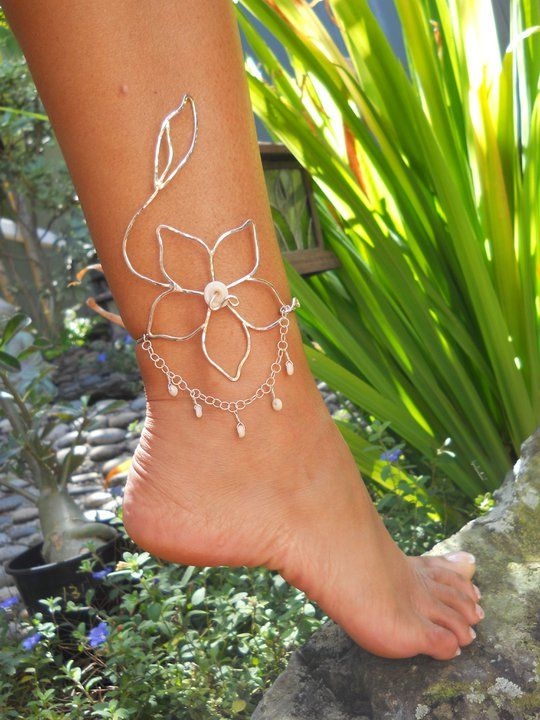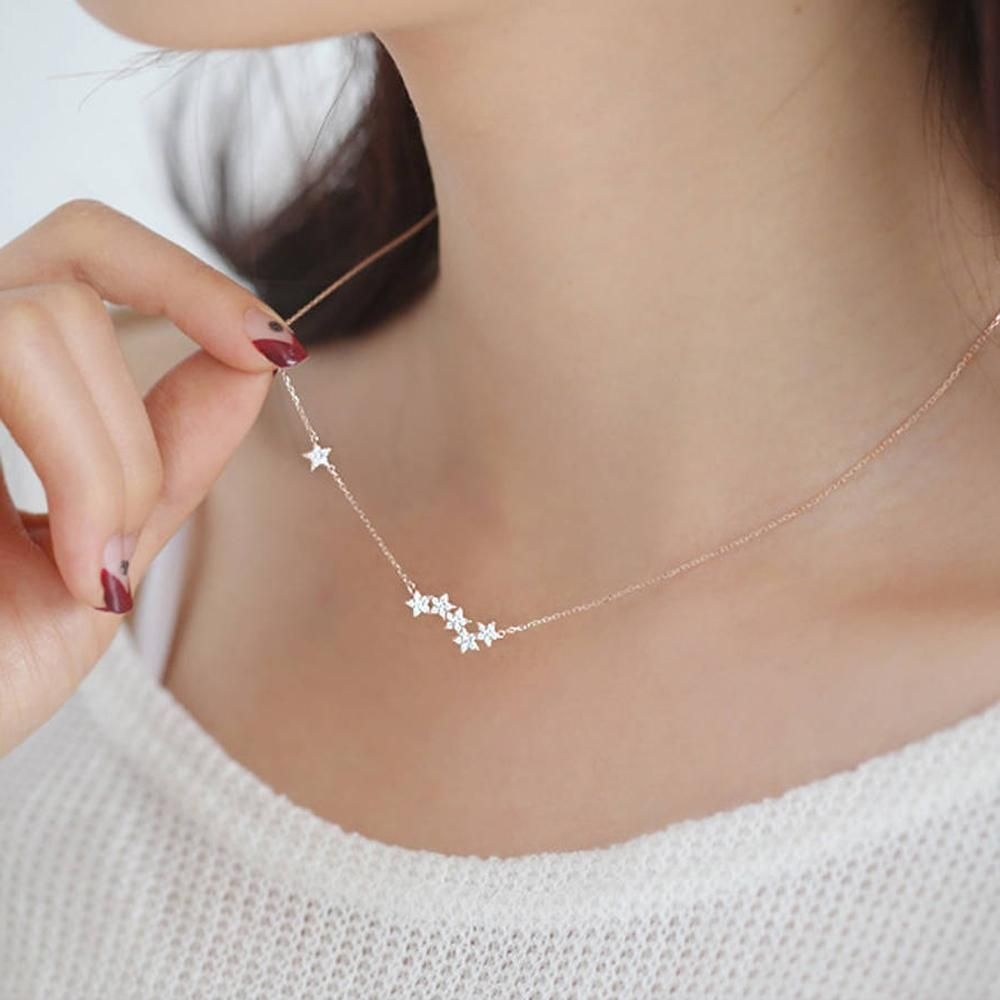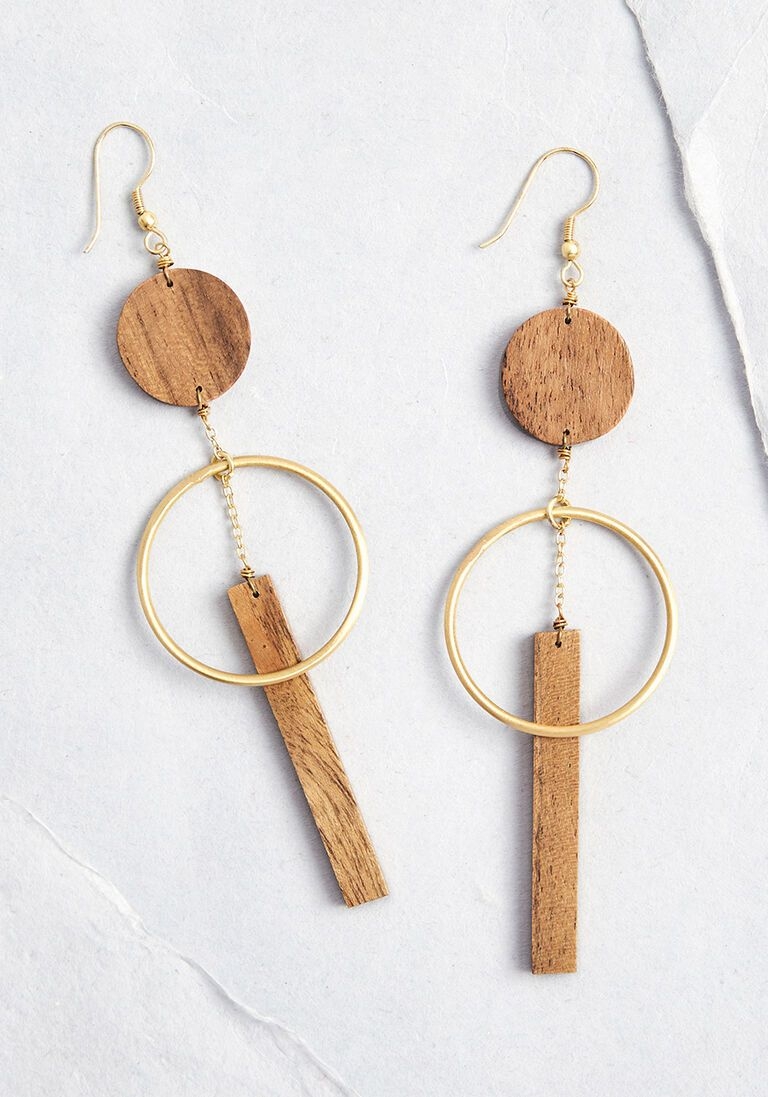Jewelry making can be a rewarding, creative and fun hobby. Providing an artist the opportunity to repurpose recycled materials into beautiful, wearable works of art. For some, it is a form of self-expression or a great way to make additional income from sales of their handmade jewelry.
Whatever the reason, jewelry making can bring hours of enjoyment when working with the best materials for each specific project. Tools will vary depending on the type of projects one wants to create, but certain base materials are used almost universally when crafting and designing pieces.
The most commonly used materials for jewelry making are several types of wire and sheet metal; common metals like copper, sterling silver and gold plate in various gauges and thicknesses. Craft stores also offer brass sheet metals that come in various patterns along with plated alloy sheets with faux gold or silver finishes that look just as striking as precious metals without the extra expense associated with them.
Other popular materials include semi-precious stones and beads; there are hundreds if not thousands of available stones with different colors and shapes to choose from& even synthetic diamonds now look so real that no one would know they weren’t authentic. Gemstones like turquoise, amethyst, rose quartz – all have their own unique beauty that can be set into pieces either by bezel setting or drilling holes if they are large enough to string onto wire.
Then there are other textiles such as leather strands, cording cotton yarns as well as different types of thread like waxed cord which is great for knotting natural stones into necklaces or more elaborate macrame designs. If a more durable material is needed then polymer clay, glass beads and charms might be another solution.
The variety does not end here& more exotic materials such as feathers & shells have also been incorporated into unique pieces for years. In conclusion, the choice of material often depends on personal preference but finding quality tools & supplies seals the deal when it comes to creating outstanding jewelry pieces.
Expand Metal Jewelry Making Materials
When crafting metal pieces for jewelry the crafter has many choices when it comes to materials. Popular alloys commonly used in jewelry making such as sterling silver, white gold and yellow gold can be well combined with other metallic elements such as copper or palladium to create beautiful pieces.
For those interested in a less expensive option, aluminum is an excellent choice. Many people select aluminum because it comes at a fraction of the cost of more common metals and alloys, yet still holds its own stylish appeal; although it is not very durable in comparison to some alternatives, simple plating can help enhance its lifespan.
Sterling silver remains one of the most commonly utilized metal components used for jewelry making due to its affordability and easy manipulation. Silver is normally composed of 92.5% pure silver and 7.5% of another metal, typically copper.
The alloying prevents rapid tarnishing while still producing that classic sheen staple in jewelry making. Rose gold provides a subtle change from the traditional yellow gold options often utilized – This 18K alloy consists of 75% pure gold combined with a blend of brass and copper resulting in that slightly pink coloration found often on engagement rings or other sentimental pieces meant for special occasions or gifting purposes.
In conclusion, each material used for jewelry crafting offers unique qualities as well its disadvantages; Alloys such as sterling silver, rose gold and aluminum provide excellent foundations to build upon depending on aesthetic preference or monetary restriction – Ultimately it is up to the designer or creator to determine which material best suits their needs when using Jewelry Making Materials.
Expand Gemstones
Gemstones have long been used in jewelry making, and for good reason. Not only do they come in a huge variety of colors and cuts, but they are also durable and can last for generations. Gemstones are cut and polished to bring out their unique character. This includes size, shape, color, brilliance, and clarity of the stones. The more rare or valuable stones will naturally sparkle with an incredible luster that can’t be found with other materials.
The most common gemstones used in jewelry making is diamond. It is valued for its hardness and durability as well as its shine. Diamonds come in all sorts of sizes from small chips to larger stones like you’d see in engagement rings.
Color is another important property when it comes to diamonds; each color range determines the cost of the diamond. Of course there are some rarer hues like pink, blue, and green diamonds which come at a higher price tag due to their scarcity and beauty.
Apart from diamonds, precious gemstones like sapphire, emerald , ruby, amethyst , and opal are popular choices for all sorts of pieces including earrings , necklaces , cufflinks , bracelets , pendants , brooches etc. Each stone has different properties so it is important to research what kind of stone you plan on using before purchasing them or planning out designs.
Gems vary widely not just in cost but also in their origin such as those that conme from South America vs Africa or even Asia making each one quite unique.
This makes them perfect when creating custom jewellery that clients can appreciate because no two pieces will be exactly alike since no two gems share identical colours shading cutting or feature effects . Certain shapes impart special qualities such as pear shaped sapphire being known especially as ‘love drops’ while square cut emeralds have been reported to have potential healing power due to its noticeable effects.
Expand Semiprecious Stones
Semiprecious stones are often used in jewelry making because of the unique variety of colors, cuts, and clarity. Because of their natural beauty and properties, many cultures believe that these stone possess different kinds of energies and spiritual powers; perhaps this is why they are popular for use in jewelry. Knowing a bit about their origin can to a certain degree enhance the appreciation for the stones.
In some cases, one finds them located near mineral veins or riverbeds where millions of years ago, seismic action cooled rocks which were then naturally split apart to reveal sparkling gemstones with various shades of color resulting from trace elements in the rock. For example, amethyst is a crystal form of quartz whose purple hues come from iron impurities found within the mineral Vein zones. It is believed to bring calmness and positive energy according to ancient belief systems.
Agate is another type of semiprecious stone which often offers vivid blues, greens and oranges depending on the originators area. It is formed when hot lava cools and fractures deep inside earth’s layers.
then, gradual exposure water cause it too sometimes become filled with colorful deposits, causing agates to form bands as though in layers where you can see through like windows along its length but with different colored shows appearing every few centimeters ranging from brownish reds through yellows and purples due to oxide crystals forming inside its structure. According to lore it can ward off bad luck ,help sleep patterns retrieve lost items etc.
Overall , each semi-precious stone holds a unique cultural history and connection inherited from those who mined them in ancient times. One thing remains consistent , they always seem add value , meaning & beauty to any piece they are usedwithin jewelry purposes.
Expand Natural Materials
When choosing natural materials for jewelry making, one of the most classic and timeless choices is pearls. Different varieties of pearls are available depending on your region, including freshwater, Akoya, Tahitian, and South Sea. Each of these types has unique properties that makes them suited to different types of jewelry.
For instance, freshwater pearls are typically round in shape with a very high luster and are perfect for necklaces or earrings. Akoya pearls tend to be saltwater produced and cultivated in Japan but are farmed elsewhere as well; they tend to be cleaner in color with a strong reflection coat and good durability.
Tahitian and South Sea Pearls offer dark grey tones which adds unique depth to pieces of jewelry like necklaces and their robust nature means they will last a long time when looked after properly while adding flair to the design you have curated with other connectors or beads.
Aside from pearls, there are also an abundance of different shells available which make great accents for more dainty jewellery designs such as anklets and wrist accessories. A few popular varieties used often in Je.
Expand Synthetic and Man-made Materials
Synthetic and man-made materials provide many benefits when it comes to jewelry making. From affordability to durability, these materials can make creating your own jewelry easier than ever before. One of the most popular synthetic and man-made materials used in jewelry making is glass.
Many types of decorative glass are often fashioned into beads for bracelets, earrings, and necklaces. Fused glass is a process where pieces of colored glass are layered together then heated until they fuse into one solid piece. This fused glass can then be molded into various shapes, making it a great material for getting creative in the studio.
Another synthetic or man-made material popular among jewelry makers is plastic resins. Rhodium plated resin is a strong alternative to sterling silver for rings and earrings because of its durability without the weight of silver or gold. Acrylics are also used when crafting custom made statement pieces as they come in many different colors that you can pair together to create stunning designs that really stand out from other pieces on the market.
There are also some organic synthetics such as corian available that lend themselves well to creating one-of-a-kind motifs with intricate detail. This material has the added quality of being incredibly light weight which makes it great for creating large pendants that won’t drag down the wearer too much, while still lasting long enough to stay beautiful and timeless throughout their lifetime.
The versatility of all these materials makes them ideal choices for anyone looking to pursue creative projects in the field of jewelry making and design.
Expand Alternative Materials
When it comes to making jewelry, many people will immediately think of materials like gold, silver, or diamonds. But today there are so many more options for creating unique and beautiful pieces of jewelry. Casting materials such as bronze and wax have risen in popularity and can have quite stunning results.
Bronze is an alloy made up of copper and tin, and when heated to temperatures over 1300°F it can be poured into molds to create metal objects such as rings and earrings. The benefit of using bronze is that it’s relatively inexpensive compared to precious metals and can offer some interesting variations in color depending on the ratio of copper to tin.
Bronze also has a higher melting point than other alloys, which makes it suitable for larger pieces of jewelry such as pendants or statement necklaces.
Wax is another material often used when casting jewelry. It can take any form and lends itself easily to intricate designs which add detail to a piece. With wax carving you can produce incredibly detailed shapes, from simple geometric designs to complex symbols and even flower petals.
It’s a great way to use a small amount of material but make something special. After the wax has been carved it can then be cast in materials such as brass or silver for truly stunning pieces of jewelry.
Metal alloys are not the only option when creating custom jewelry, however. There are many types of wood available which can be used in combination with beads or stones to create beautiful natural-looking pieces.
Bamboo is one popular choice due its durability and affordability – you could carve intricate shapes into the bamboo then thread beads onto strings attached either side allowing them to hang pendulum-style from the carved surface pattern (a popular style among African artisans). Regardless of which material you choose, with a little imagination there’s an endless array of possibilities when it comes to creating custom jewelry by hand.
Expand Considerations When Choosing Jewelry Making Material
When choosing jewelry making materials, safety and health considerations are key. Some materials may contain heavy metals or other dangerous components that can be harmful if breathed in or contact with skin is made.
Metals such as copper and silver may contain lead or other hazardous metals, so protective gear should always be used when working with these materials. Also take precautions wearing a face mask to prevent inhaling fine particles of metal dust byproduct when sawing, filing and polishing the jewelry.
Additionally, consider the type of material for both strength and care requirements; will it tarnish quickly? Does it require special cleaning solutions? Does it need to last long? Is it sturdy enough for daily wear?
Different gems also have specific care requests, so research these and know what is best for your project before purchasing any supplies. Ask questions at your local art supply store regarding best practices for chosen material like hardness level on pieces when drilling holes or sawing patterns etc. ; this information will come in handy once you start creating pieces of jewelry.
Aesthetic is also important consideration when choosing materials. Do the colors coordinate properly with one another? Ensure complimentary tones to optimize impact of each piece. Can subtle hues be captured, making an eye-catching composition unique?
Quirky accents add interest to designs, but ensure they are not overpowering else piece will look too busy – find balance between vividness and simplicity. Be sure the surface finishes on beads match each other smoothly enough to move beautifully together upon motion (i;e jangling). Consider texture diversity within designs along with usage of only non-toxic paints if a colorful tinge desired for certain elements – practice precaution with any chemicals you purchase.
Overall keep all these factors in mind when choosing crafting supplies to avoid potential health risks while still creating attractive pieces that compliment your style correctly.
Add Section
Taking proper care of jewelry making materials is essential for getting the highest quality possible out of a piece. Metals, like brass and copper, should be stored in dark, dry areas away from any moisture or exposure to extreme temperatures as this can cause oxidation.
These metals are also susceptible to scratching, so it’s important not to wear them when doing activities such as gardening or athletics where they may be exposed to these elements. To add extra shine after cleaning the metal it’s encouraged to use simple polishes or cloths suitable for that metal, this can help retain its luster and color over time.
Gemstones are a popular choice for many jewelry makers. They come in many forms from glass and crystal beads to more rare natural stones like rubies and diamonds. Unlike metals, gems require special care so that they do not incur damage during production or when worn on clothes.
To clean dirt off gemstones simply dampen a soft cloth with water then lightly scrub until all particles have been removed, being careful not to scratch the surface of the stone itself. It is also important when handling gemstones with your hands that you keep them free of any oils or lotions as these can damage certain types of stone over time if left on them too long.
Lacquers and sealants are essential components in any sort of jewelry making project that requires some durability in pieces over time. When applying these coatings it’s best done before adding other decorative elements like enamel paints or dyes so as not to interfere with their application later on in the process.
Lacquers should be applied generously enough so that all parts of the piece are covered but without excessive amounts going beyond its edges into unwanted locations – as this could lead to uneven movements later on when wearing which can affect how comfortable clothing fits around a piece of jewelry made thusly.
Sealants once applied should then be allowed to cure for some time according to their instructions before moving onto any further embellishments so as not to disrupt their secure bond once dry.
Expand Conclusion
It is extremely important to select the right materials when choosing jewelry making supplies. Quality materials will allow customers to make long lasting and beautiful pieces. If a craftsperson starts off with inferior ingredients, the end product might not have as much longevity or overall appeal as one made from better quality items.
Another advantage of using the best materials for jewelry making is that it ensures accuracy in size and shape. If someone uses poor quality metals, beads, wires, or other components, it can be difficult to create professionally crafted goods without costly mistakes or blemishes.
Top-tier materials are more easily measured and manipulated into designs that conform to expected industry standards. They also allow crafters to save time since they don’t need to fix as many adjustments along the way.
The type of material used also sets expectations for how much money customers will pay for finished products. Lower-grade goods look less expensive than their higher quality counterparts which may make them unpopular with buyers who expect an item made from good material should cost more than something constructed with lower cost elements.
Knowing this before creating jewelry gives crafters an idea of how their wares will compare price wise on the market and what types of materials they must use in order to establish credibility as a reputable spa provider who produces a higher value product each time out.
By investing in high-quality components for their projects, Do-It-Yourselfers can be sure that their finished attire looks beautiful and that it won’t wear down quickly or start breaking apart over time due to improper construction or low grade parts. Plus, if craftspeople are looking to create luxurious and unique pieces – like handmade originals – then premium supplies may be the only way they can guarantee those requirements are met from start to finish.

Welcome to my jewelry blog! My name is Sarah and I am the owner of this blog.
I love making jewelry and sharing my creations with others.
So whether you’re someone who loves wearing jewelry yourself or simply enjoys learning about it, be sure to check out my blog for insightful posts on everything related to this exciting topic!





